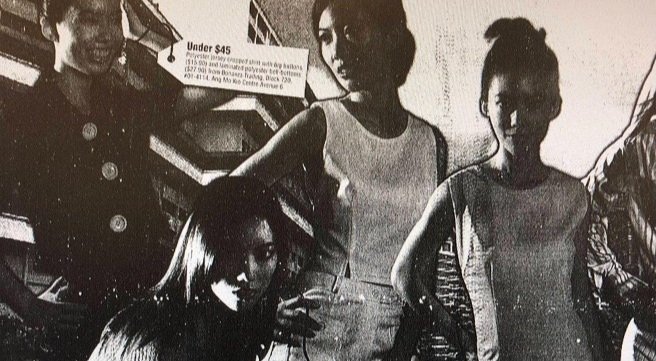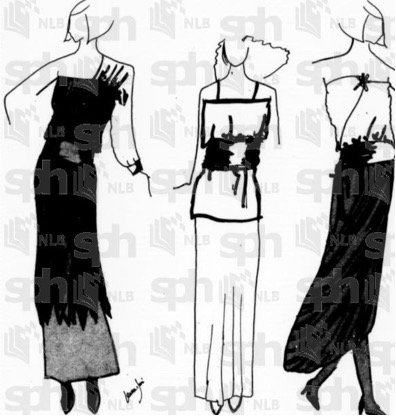1970s
Key themes
-
By the 1970s and 1980s, Singapore’s Economic Development Board was institutionalising certain fashion practices such as design, manufacturing, and the production of fashion shows, to use fashion to put Singapore on the global map. Throughout this period, fashion shows thus expanded beyond exclusive spaces (Wong, 2022). High-earning models including Carrie Wong, who worked in Hong Kong before arriving in Singapore in 1972, could demand SGD1,500 per month in 1973. Wong’s work was wide-ranging – house modelling, runway shows, photographic modelling, and appearances in newspapers, calendars, and on television. Modelling competitions, such as ASEAN Model Search, were held to scout for new models and contracts were awarded as prizes – Carrie Wong had won a contract to be a house model for Emilio Pucci in Florence in 1974 and Hanis Saini won a contract to model with Yves Saint Laurent in Paris. Nora Ariffin won herself a trip to the US as the prize for Best Model of the Year and Best Photogenic Model in 1985. By 1978, modelling and being a flight attendant were valourised careers for women leaving school.
-
In the 1970s, media coverage on fashion highlights that a critical focus was on consumption, both in terms of laying out the itinerary and guides for where, how, and what to consume; as well as an astute attention to consumer rights by government bodies. By 1976, Singapore already had the Consumer Protection Act and the Hire Purchase which ensured the five basic rights of the consumers. Coverage of fashion boutiques and shopping centres increased, framing shopping as a family leisure activity and effectively laying new geographies of shopping in Singapore.
-
During this time Singapore fashion had notable international relations and influences from the likes of Japan and Paris. The relationship between Singapore and Japan saw a marked development between the 1970s to the 1990s as Japanese tourists started setting their sights on Southeast Asia as their travel destination.. In the 1960s and 1970s, Japan-related events and advertising held significant value in Singapore’s media. The tone of reportage was often promotional and expressed high regard for Japan to leverage Japan’s perceived cultural superiority. Japanese designers looked to Singapore to set up their regional base for Southeast Asia. Notable trailblazers such as Issey Miyake, Yohji Yamamoto, Rei Kawakubo and more won over the favour of Singapore’s retail market since the 1970s. Departmental stores such as Isetan carried designs from Yohji Yamamoto and Comme des Garcons with dedicated corners in the store for them. Their prominence in Singapore grew as they secured regular platforms for their shows as their European counterparts such as Balmain did at Mandarin Hotel and Kanebo at Hyatt. Additionally, the proliferation of the Singapore Girl uniform during this time coincided with the boom of uniform production in Singapore in the 1970s.
-
In the 1970s, the broadsheets started carrying sections, columns and advertorials discussing the latest shopping trends, sites and sales became a regular feature. These features highlighted reviews and locations of fashion shops and centres in Singapore. Profiles also emerged as a new format introduced by New Nation, which broadens its scope of coverage beyond models and designers, as well as a diversification of roles featured, such as hairstylists, makeup artists, movie stars. Profiles were now a key format of choice and included but not limited to just models. This mode of reportage emerged as a new space for the circulation of fashion trends, which was evident particularly in their features of ‘everyday/regular’ people for their interests in fashion and style. Overall, there seemed to be a shift away from columnists, but a greater number of journalists.
More stories
-

'Tropical Fiesta', Singapore's Landmark Fashion Show of 1989
by Angelene Wong
Tropical Fiesta was one of the most extravagant fashion shows Singapore has seen and a key instance of cultural tourism, held during the 1989 Singapore International Shopping Festival. The show, organised between the fashion industry and governmental institutions, was a fashion spectacle for the Italy-based brand Byblos to raise funds for the new Singapore Dance Theatre.
-

A Sartorial Mapping of Singapore's Fashion Districts
by Ruth Francesca Ho
Singapore’s fashion districts, which expanded from the 1950s to the 1990s, are geographical and architectural imprints of Singapore’s changing fashionable aspirations. These dynamic districts reveal how Singapore negotiated an increasingly globalised fashion landscape, reflecting and facilitating greater fashion consciousness and consumption amongst Singaporeans.
-

The Ascent of Japanese Fashion in Singapore
by Celestine Chia
Japanese designers caught the attention of Singaporean consumers and beyond through bold visual statements in their designs that seemed to challenge the conservativeness and conformity often associated with Asianness. This led to the rise of Japanese fashion in 1980s Singapore and the overall development of the relations between Japan and Singapore, facilitated largely through cultural exchange.
-

Singapore's Parisian Dream
by Angelene Wong
This article explores the relationship between Paris and Singapore, how Singaporean journalists have interpreted Paris for a Singaporean audience to sustain Paris’s influence as a fashion capital, how Parisianness has been adapted for Singaporean consumers, and how Paris was used as a benchmark for international success for Singaporean fashion practitioners.
-

Australian Fashion in Singapore from the 1960s to the 1980s
by Leonard Wong
Australia was a major trading partner of fashion and textiles in Singapore from the 1960s to the 1980s. The constant innovation of fabrics and designs for an Australian climate contributed to cultural and economic exchanges between Australia and Singapore.